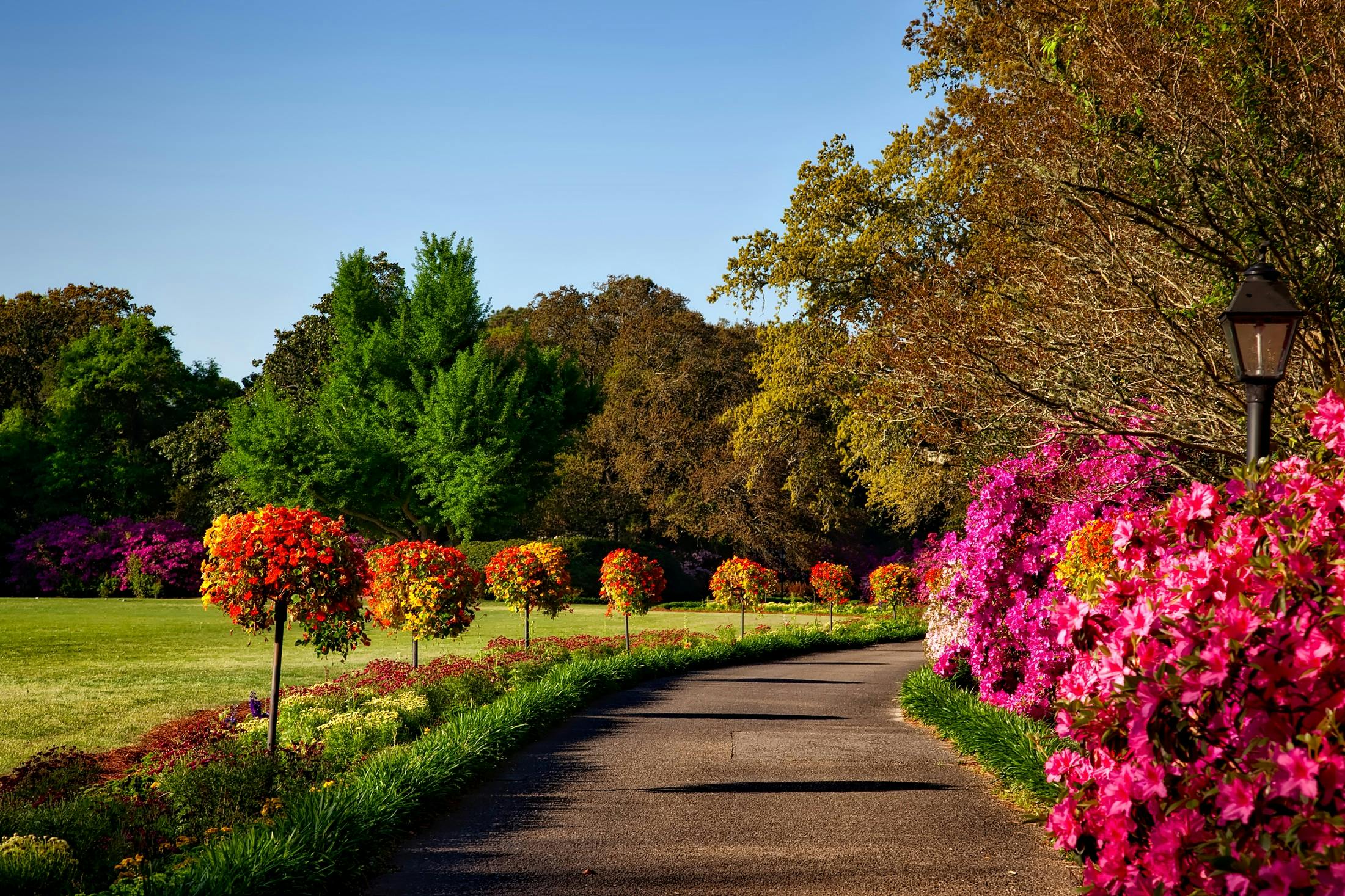Landscaping a sloping garden holds unique challenges. With the UK’s climate often bringing heavy rainfall, the struggle to prevent soil erosion on a slope is a genuine concern. But fear not, as we will explore the steps to transform your sloping garden into a verdant, erosion-resistant woodland sanctuary, using knowledge from the world of forestry and some savvy gardening techniques.
Understanding the Impact of Slope and Soil
The first step in tackling a sloping garden is understanding the impact of the slope and soil conditions. The physical characteristics of your garden, including its slope, directly influence the planting strategy you should adopt. Steeper slopes require species that can withstand high water consumption and cope with the risk of erosion.
A découvrir également : How Can You Incorporate Smart Appliances for an Efficient Kitchen Workflow?
The soil type also plays a crucial part in your garden’s future success. Some soils drain quickly, leaving plants parched, whereas others retain water, risking waterlogging and plant diseases like Phytophthora. A simple soil test will reveal the soil’s structure and nutrient content, guiding you towards plants that will thrive in your garden’s conditions.
Statistics from the Forestry Commission show that soil erosion is a significant issue in the UK, primarily due to rainfall intensity and ground disturbance. Therefore, it’s essential to consider your garden’s slope and soil when planning your landscaping project.
En parallèle : What Are the Best Acoustic Wall Treatments for a Semi-Detached House Party Wall?
Choosing the Right Plants
Once you’ve understood your garden’s slope and soil conditions, the next step is selecting the right plants. The ideal plants for a sloping garden are robust, adaptable, and capable of preventing soil erosion. They should be able to withstand heavy rains and thrive in your garden’s soil conditions.
Choosing a mix of deep-rooted trees and shrubs will help bind the soil together, reducing erosion risk. Woodland species are particularly efficient at this, making them an excellent choice for sloping gardens. The Forestry Commission recommends a variety of woodland species suitable for sloping gardens. These include elder, rowan, and willow, all of which have substantial root systems for soil stability, and moderate to high water consumption, making them tolerant of the UK’s rainy climate.
Landscaping Techniques to Prevent Erosion
The way you landscape your garden can drastically reduce the risk of erosion. One common method is terracing, where the slope is transformed into a series of levelled areas or steps. This method effectively reduces the slope’s steepness, slowing down water flow and reducing erosion.
Similarly, installing retaining walls can provide support to the soil and prevent it from sliding downhill. These can be made from timber, stone, or concrete, although a more natural look can be achieved with drystone walling or wooden logs.
Incorporating Forestry Methods
Forestry methods can provide valuable insights into managing sloping land and preventing erosion. These practices focus on long-term sustainability and the overall health of the woodland ecosystem.
When it comes to planting, forestry methods advocate the careful selection of species based on their suitability to the local environment and their potential for stable growth. They also promote the importance of diversity in planting, which helps to create a more resilient ecosystem that can better withstand adverse weather conditions and disease.
Forestry methods also stress the importance of monitoring and ongoing management. Regular checks can help to detect any signs of disease or poor health early, allowing for timely intervention.
Production of Your Woodland Garden
The final step in landscaping your sloping garden is the production or implementation phase. This is where all your planning and preparation come to life, as you begin planting and constructing your garden.
Remember to follow your plans closely, ensuring each plant is placed correctly in accordance to your chosen layout. Consider using an irrigation system to control water consumption, especially during the initial phase when plants are establishing themselves.
Moreover, regular manual maintenance is essential to keep your garden healthy and thriving. Prune any overgrown plants, remove deadwood, and always keep an eye out for signs of disease or pest infestation.
In all, landscaping a sloping garden in the UK climate can be a rewarding endeavour. With the right understanding of slope, soil conditions, appropriate plant selection, effective landscaping techniques, and the incorporation of forestry methods, you can create a beautiful, resilient and productive woodland garden. Remember, patience is key – trees and plants will take time to grow and establish themselves, but the end result will be worth every effort.
Harnessing Public Opinion and Private Sector Expertise
When planning to landscaped a sloping garden, sourcing knowledge and opinion from experienced private sector entities like fencing manufacturers and forestry experts is beneficial. These experts can provide guidance on the type of fencing suitable for a sloping garden, such as round fencing, which can complement the natural elements of a woodland area. They can also advise on the best types of trees to plant for erosion prevention, soil stability, and aesthetic appeal.
The horse chestnut, for example, is a popular choice for sloping gardens in the UK due to its extensive root system, which makes it excellent at preventing soil erosion. However, the horse chestnut is susceptible to diseases like bleeding canker. Hence, it may not be the ideal choice if your garden has a history of tree health problems. These are the crucial details that only experienced forestry experts can provide.
The public opinion can also be a valuable resource for inspiration and advice. Forums, blogs, and social media platforms are rich with information and ideas from people who have successfully transformed their sloping gardens. You can learn from their experiences, successes, and failures to better plan your landscaping project.
Moreover, these platforms also provide a venue for you to share your journey in landscaping your sloping garden. As you share the progress of your garden, you not only inspire others, but you also contribute to the collective knowledge and public opinion on the best ways to landscape a sloping garden and prevent erosion in the UK climate.
The Role of Wood Production and Consumption
Wood production plays an essential role in landscaping sloping gardens. Wood is a versatile material that can be used in a variety of ways in your garden, from constructing retaining walls and steps to creating tree guards and planters.
Softwood removals, a forestry term referring to the removal of less robust trees to allow for the growth of stronger ones, is a practice that can be incorporated into your garden planning. By removing weaker trees and replacing them with stronger, deep-rooted species, you can enhance the stability of your garden’s slope and ensure the longevity of your woodland area.
On the other hand, wood consumption is a factor to consider when landscaping your garden. Too much wood consumption can lead to deforestation and environmental degradation. Therefore, it’s crucial to source wood products responsibly.
A good way to ensure responsible wood consumption is to use recycled or reclaimed wood. Not only is this environmentally friendly, but it can also add a unique, rustic appeal to your garden.
Finally, consider incorporating practices such as planting and restocking, as promoted in the OPM (Operational Procedures Manual) for the forestry sector. This manual encourages planting new trees for those removed, ensuring a sustainable approach to wood production and consumption.
Conclusion: The Journey to a Resilient Woodland Garden
Landscaping a sloping garden in the UK climate is undoubtedly a challenging task. However, with a thorough understanding of your garden’s slope and soil conditions, careful plant selection, effective landscaping techniques, and the incorporation of forestry methods, you can transform your sloping garden into a beautiful, resilient, and productive woodland area.
Garnering the opinion of forestry experts and the wider public, as well as responsibly managing wood production and consumption, are key to ensuring your garden’s sustainability. Moreover, continuous monitoring of your garden’s health and regular maintenance are crucial for the success of your project.
The journey to creating a woodland garden is a long and laborious one. It requires time, patience, and hard work. But once you see the fruit of your efforts, once you see your garden blooming with diverse woodland species, standing firm against heavy rains, and flourishing in the UK climate, you’ll find that every drop of sweat was worth it. The ultimate reward is not just a beautiful garden but a resilient ecosystem that fosters biodiversity and contributes to the overall health of our environment.
Remember, your garden is not just a space for you to enjoy. It’s also a statement of your commitment to the environment. It’s your contribution to a sustainable future. So, take pride in your garden, and share your journey with others. Together, we can make a difference, one garden at a time.











